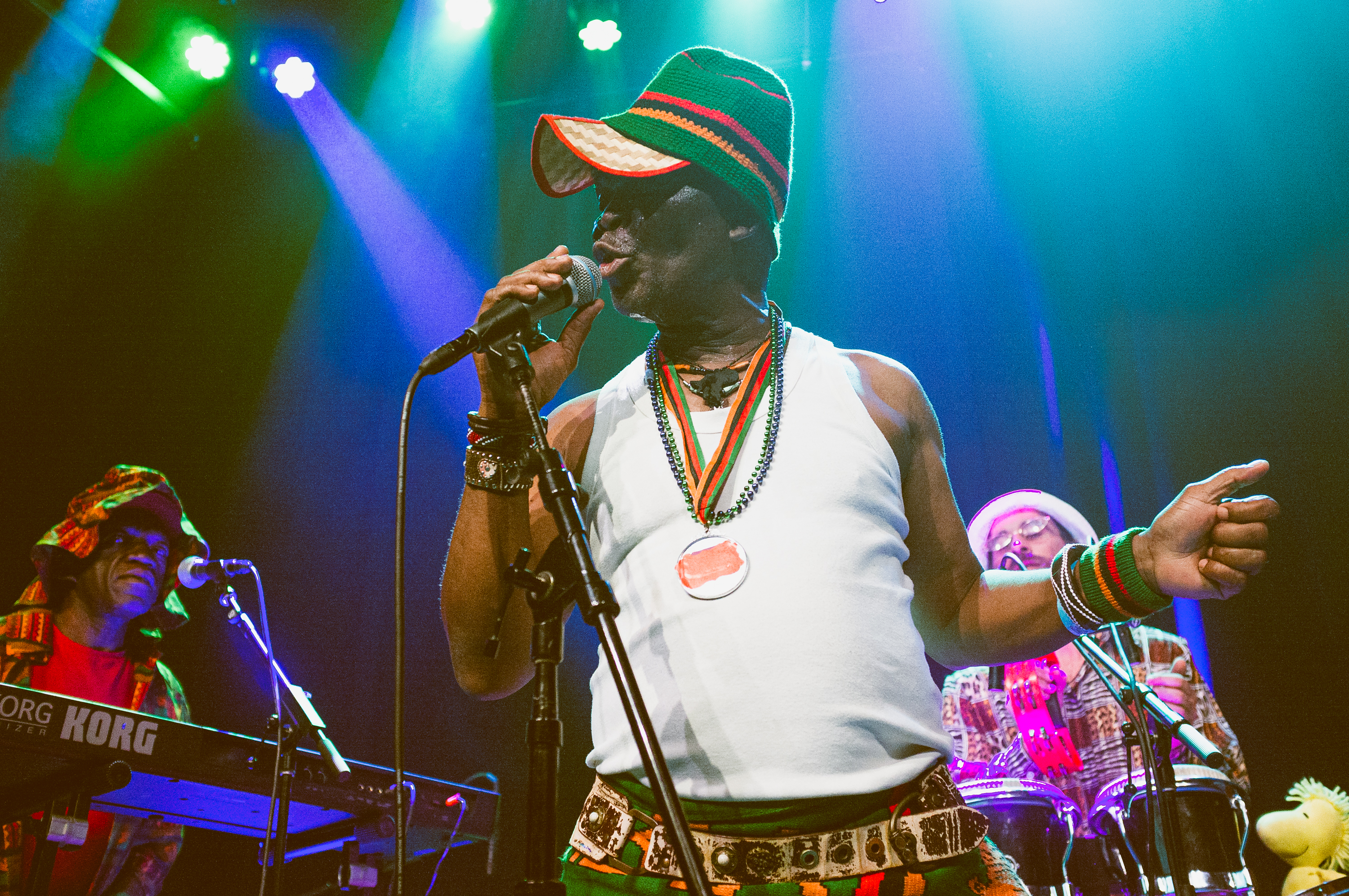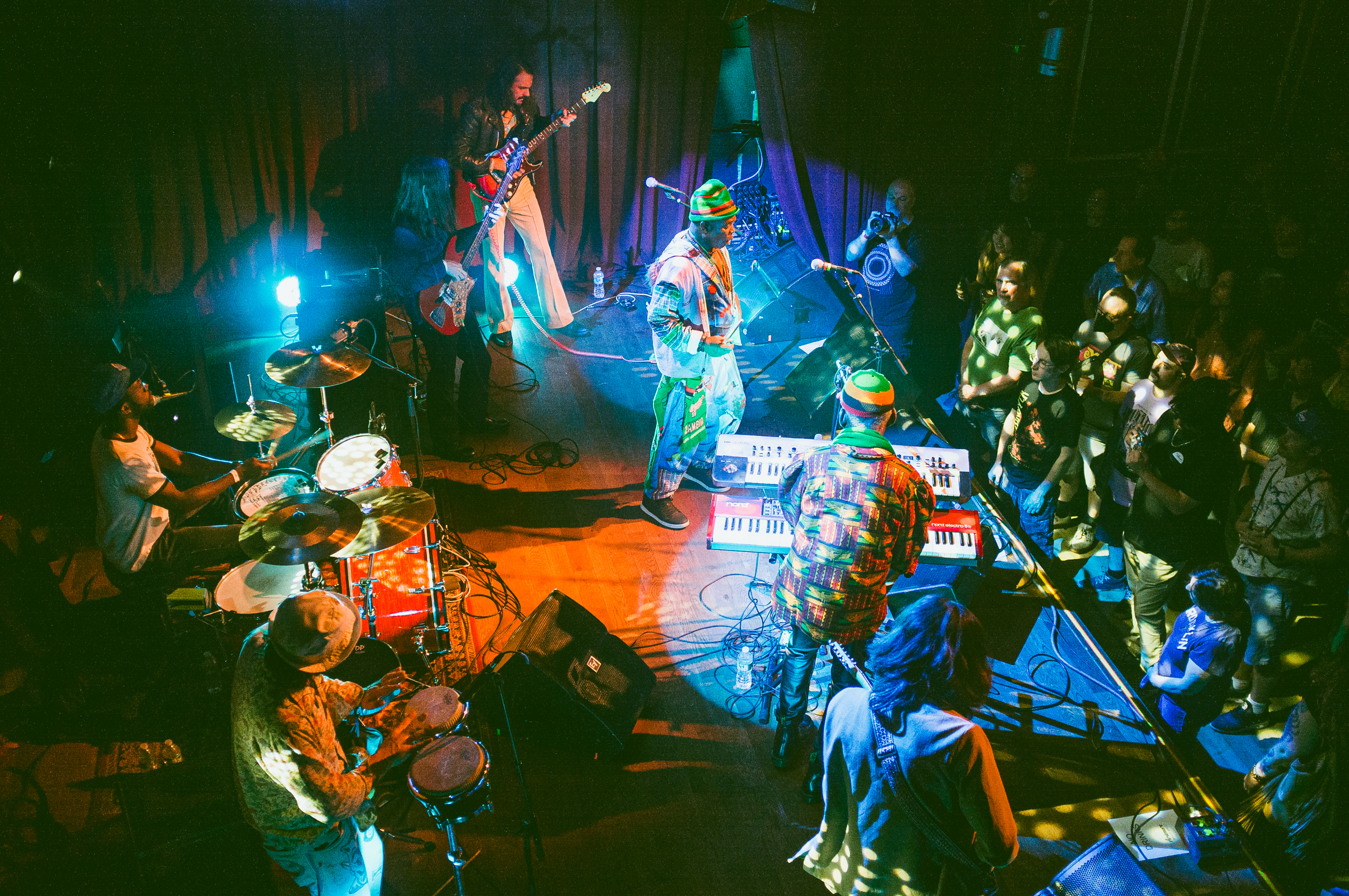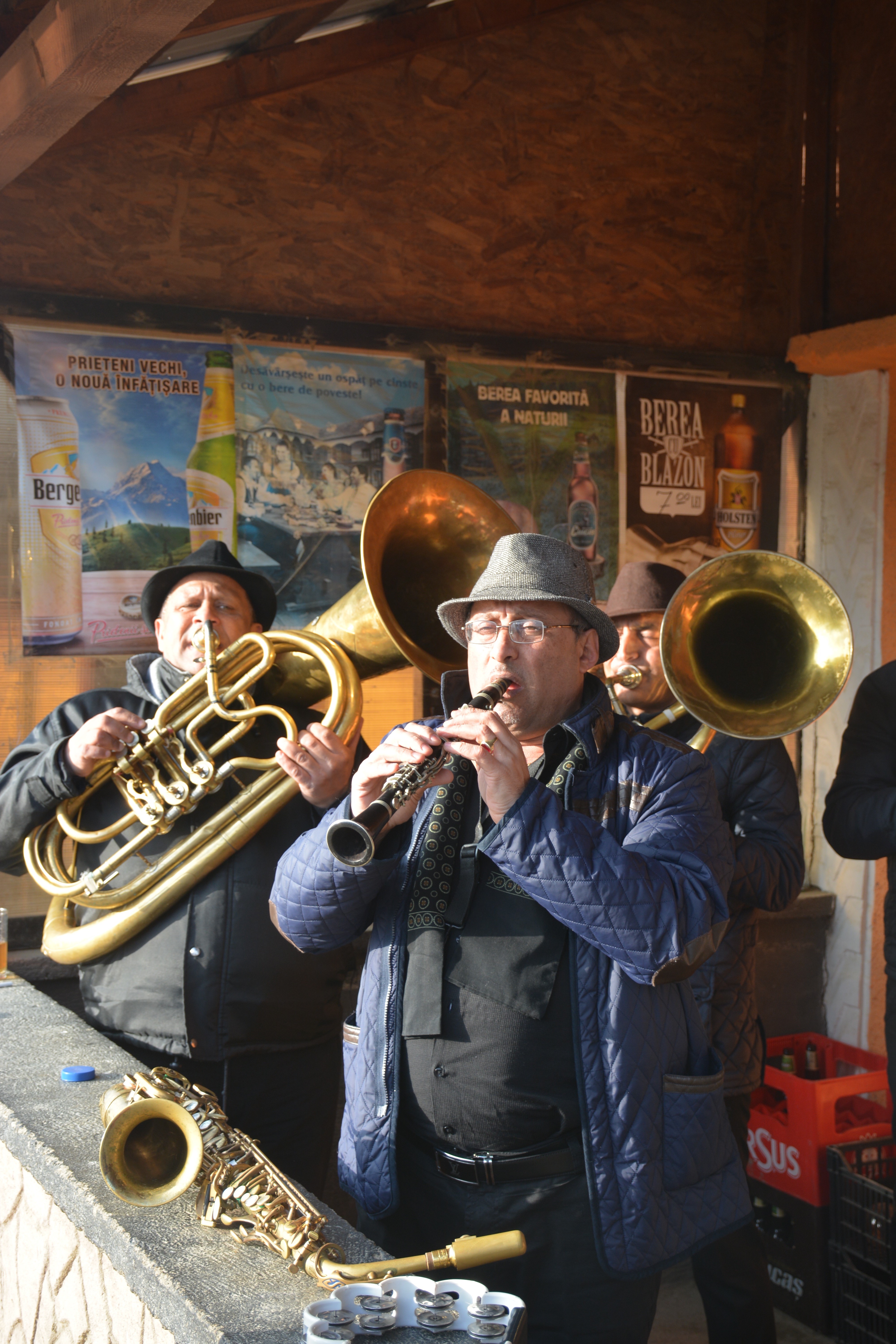Wednesday, July 10, 2024
WITCH: Zamrock Recovery
Daniel Spicer finds out about the rise, fall and resurrection of WITCH. “Times have evolved,” says Emmanuel ‘Jagari’ Chanda

WITCH © Carolina Faruolo
It feels like a new lease of life for me,” says Emmanuel Chanda – aka Jagari – co-founder, singer and frontman of Zambian rock group WITCH. “It’s a resurrection,” he says with pride and excitement, talking about the band’s recent unexpected flurry of activity. For Jagari, it’s been a long time coming. Since he first left WITCH’s original line-up in 1977, he’s been a student, a teacher of music in secondary schools and, more lately, an amethyst miner doing back-breaking work pulling semi-precious stones from the ground with his bare hands. Right now, we’re chatting over a WhatsApp call as he takes a lunchtime break from mentoring young people at Modzi Arts Gallery in the Zambian capital, Lusaka. “I was doing other things,” he shrugs, “but, of course, the destiny was still calling.”
That destiny is now manifest with the release of Zango, WITCH’s first new album in nearly 40 years. Recorded in Lusaka in November 2021, it features brand new tracks that faithfully recreate the vibe of 1970s Zambian rock – known as Zamrock – with garage-band riffs, psychedelic lead guitar, fuzzy basslines and clipped back-beats combined with infectious central and southern African rhythms. Add to that Jagari’s striking vocal performances with lyrics that veer from party-time exhortations to serious social commentary. On the album’s final track, ‘Message From WITCH’, he proclaims: ‘Zamrock has resurrected from its decades of slumber,’ before delivering a heartfelt sermon calling for an end to homophobia, antisemitism and xenophobia.



WITCH on their US tour, June 2023 © Carolina Faruolo
If early WITCH albums like their 1972 debut Introduction and 1974 follow-up In the Past sound thrillingly raw and somewhat primitively recorded by modern standards, then Zango shimmers with a smart, 21st-century sheen. It also includes pan-global influences not heard on the originals: ‘Streets of Lusaka’ has a cavernous dub reggae feel, while ‘Unimvwesha Shuga’ bounces like the deepest Somali funk. It’s perhaps not surprising that the latest edition of WITCH has such an omnivorous, magpie aesthetic, given that it’s now a truly international and intergenerational outfit. Alongside Jagari, the only other member to have previously played in WITCH is London-based Zambian keyboardist Patrick Mwondela – though the two were never bandmates. “We are from different line-ups,” Jagari explains. “Patrick came in after I left to go to college.” The rest of the band on the album are younger European musicians: Dutch multi-instrumentalist Jacco Gardner, drummer and fellow Dutchman Nico Mauskoviç, German guitarist Jan Weissenfeldt (aka JJ Whitefield) and Bulgarian-born, Swiss-based guitarist Stefan Lilov. “It’s like an international squad!” laughs Jagari. “I’m the only one from Africa at the moment.”
The young European cohort are among the many non-African fans who were originally hipped to WITCH following the release in 2011 of a career-spanning compilation by Now Again Records, the first time the group’s music was made widely available outside Zambia. Jagari has been impressed with their ability to authentically inhabit the WITCH sound. “They may be young but they are very talented people,” he says. “And for whites, so to say, to play so well like they were part of the original line-up, it’s encouraging. They have interests in African music so it’s easy for them to feel the grooves of the African rock and roll.”
It’s not just in the studio that the current line-up has proven itself. They’ve played critically acclaimed live shows in Lusaka, London and Los Angeles, as well as festival appearances at Green Man, SXSW and elsewhere. For Jagari, now a very fit and active septuagenarian, it’s been a joy to get back on stage. “I do enjoy it a lot,” he says. “And, you know, the fusion of the new line-up has increased the fan base. They can see the energy in the band and we share the energy with the fans.” I ask Jagari how he feels about bringing his Zamrock vision to very different audiences than he would originally have played for back home and back in the day. “Times have changed, times have evolved,” he begins to answer, but just then the WhatsApp connection breaks and our conversation is cut short. I attempt to call him back but the line just won’t hold. I send a message asking when it would be convenient for us to resume our chat, and Jagari tells me that he’s just about to fly to Chicago to begin a US tour with WITCH and I can catch him while he’s on the road. But it doesn’t quite work out that way. Over the next week, I try in vain to track him down but he’s either sleeping, rehearsing or performing, sharing the pulsating energy of Zamrock with adoring audiences night after night. He is, in short, living the dream.
That dream began in the 1960s when the teenage Emmanuel Chanda and his peers were turned onto the British and American rock and pop that began emanating from radio stations and record shops in Lusaka. The Rolling Stones and Jimi Hendrix were early favourites but, as the young Zambians flicked through the pages of cherished copies of Melody Maker, they were drawn to other sounds too, with Deep Purple, Grand Funk Railroad and the vocal harmonies of The Hollies particularly grabbing the young Chanda. In a scene repeated in a million garages and basements around the world, they decided to start their own band and, in 1972, WITCH was born with the line-up of Chanda on vocals, Chris ‘Kims’ Mbewe on lead guitar, Gideon ‘Giddy King’ Mulenga on bass, Boidi ‘Star MacBoyd’ Sinkala on drums, John ‘Music’ Muma on rhythm guitar and Paul ‘Jones’ Mumba on keyboards. The band’s name was an acronym standing for We Intend To Cause Havoc – and they lived up to their moniker in every way, quickly becoming known for their wildly energetic stage shows that could last up to seven hours. Chanda was routinely described as the Zambian Mick Jagger and, tiring of the comparison, he decided to create his own identity, combining the Stones singer’s surname with the name of a local cane sugar, jaggery, to become Jagari.
The release of their 1972 debut, Introduction, was a major event. Privately pressed by the band, it was the first commercially released record by a Zambian group, and it kickstarted a phenomenon as other local acts sprang up in their wake including The Peace and Amanaz (whose leader and vocalist, Keith Kabwe, makes a guest appearance on Zango). By the mid-70s, a thriving scene was in full swing, with DJ Manessah Phiri credited as first calling it Zamrock. When Ghanaian-British Afro-rock superstars Osibisa visited Zambia, WITCH played triumphant shows as the support act. They were huge – and hugely loved – homegrown stars who seemed destined for greatness.




WITCH on their US tour, June 2023 (© Carolina Faruolo)
Global events, however, were against them. Though Zambia had achieved its independence from Britain early, in 1964, and had enjoyed peace ever since, neighbouring countries such as Rhodesia and Angola were caught up in their own freedom struggles and internal turmoil in the 1970s. When Zambia began to shelter refugees, its power stations were bombed, resulting in widespread curfews and blackouts, which, when combined with a nosediving economy, made it hard for musicians to earn a living. At the same time, the rise of disco and Congolese rumba meant that rock began to fall out of favour. After the release of two more albums – the psychedelic classic Lazy Bones!! in 1975 and Lukombo Vibes the following year – Jagari quit the band to study, spurred on by a religious awakening. WITCH regrouped under the leadership of keyboard whizz Patrick Mwondela, embracing the disco sound on albums like 1980’s synth-laden Movin’ On but, by the mid-80s, the entire scene had fizzled out, without ever having made an impact outside Zambia.
Zamrock might have remained in obscurity if that 2011 compilation hadn’t alerted European cratediggers to its crackling energy. Among those energised by the discovery of an unfairly forgotten pantheon of Zambian rock gods was London-based Italian filmmaker Gio Arlotta, who travelled to Zambia in search of WITCH. As shown in his 2019 documentary WITCH: We Intend To Cause Havoc, he discovered that Jagari was the band’s last surviving original member, with the others having fallen victim to the AIDS epidemic that ravaged Zambia from the 1980s onwards. The movie shows a sanguine Jagari happily turning his back on the amethyst mines he was then toiling in, as Arlotta assembles a band of young European hipsters to help him bring the music of WITCH alive for the 21st century.
The project was, as we know, an enormous success, leading directly to Jagari’s first-ever shows in Europe and the US, and to the recording of Zango in the very same Lusaka studio – and even using some of the same analogue equipment – used to record Lazy Bones!! So, for a blast of Zamrock’s belatedly fulfilled potential as some of the funkiest psych ever made, crank up Zango on your stereo. And if you bump into Jagari on the road, say hello from me. He still owes me a phone call.
This feature originally appeared in the August/September 2023 issue of Songlines. Never miss an issue – subscribe to Songlines today

